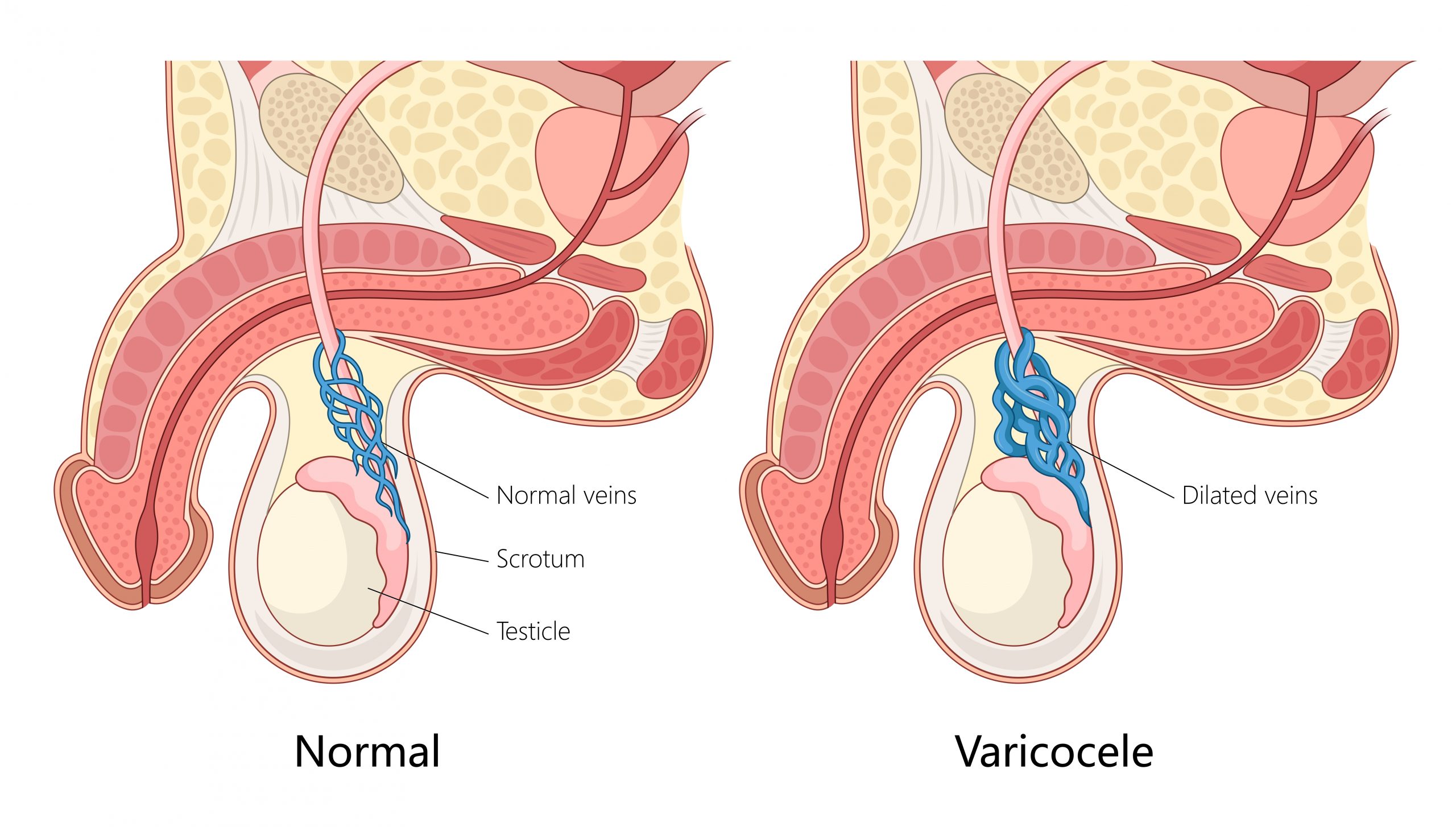Home / Varicoceles
Varicoceles
What is Varicoceles?
Varicoceles are large veins that drain blood from the testicles. They are like varicose veins of the leg. Most often, they occur after puberty on the left side of the scrotum. Once a varicocele is present, it will not go away on its own.
Blood carries oxygen to various parts of the body through arteries. Arteries have muscular walls that pump the blood away from the heart. Veins are the channels that bring the blood back to the heart, and they do not have thick, muscular walls. The blood in them moves more passively and is pushed back toward the heart through the pressure of the blood being pumped away from the heart and the movement of the muscles and other structures surrounding the veins pushing against the vein walls.
Interspersed along the veins are a series of one-way valves. These valves allow the blood to flow towards the heart but stop the blood from “slipping” backwards. If these valves are not working properly, blood will flow backwards and, because of gravity, the blood will collect in the most dependent (lowest) part of the pathway.
Most people with varicoceles have no symptoms. Some do feel pain. The pain can vary from a dull, heavy discomfort to a sharp pain. The pain may increase with sitting, standing or strenuous activity. It usually resolves when lying flat on the back.
The testicle on the side with the varicocele may be smaller in size than the one on the opposite side. The affected testicle may not grow well and may not produce good sperm. The scrotum (sac) may appear swollen.
How do varicoceles affect fertility?
Increased temperature of the testicles: The testicles are located in the scrotum, which effectively regulates their temperature. They are maintained at a temperature slightly below body temperature. Varicoceles are a group of dilated veins which surround the testicles. The blood is at body temperature, and if the testes are near these veins, they will be kept at a higher temperature than is beneficial for them. When a varicocele is repaired, the blood is no longer able to flow back into the scrotum. This affects not only the testes on that side, but also the opposite side. With this normalization of temperature, there may be some dramatic improvement in sperm production.
Increased waste products back-flowing into the testicle.
The veins draining the testicles connect into larger veins. On the left side, they drain into the kidney vein, which is draining blood from the kidney. The blood from the kidney carries waste products, which may then drain backwards into the scrotum and collect there. This may negatively affect sperm production.
Treatment Options
Non-surgical treatment for a varicocele is to use a scrotal support and for any associated pain, ibuprofen or acetaminophen. Decisions about surgical repair of the varicocele are based upon differences in testicular size, amount of pain, and semen analysis. Surgery involves cutting the veins that cause the varicocele. A variety of surgical approaches have been advocated for varicocelectomy. They include minimally invasive procedures, such as laparoscopic varicocele and transvenous percutaneous embolization ligation, and the traditional open surgical approach (retroperitoneal, inguinal and subinguinal).

